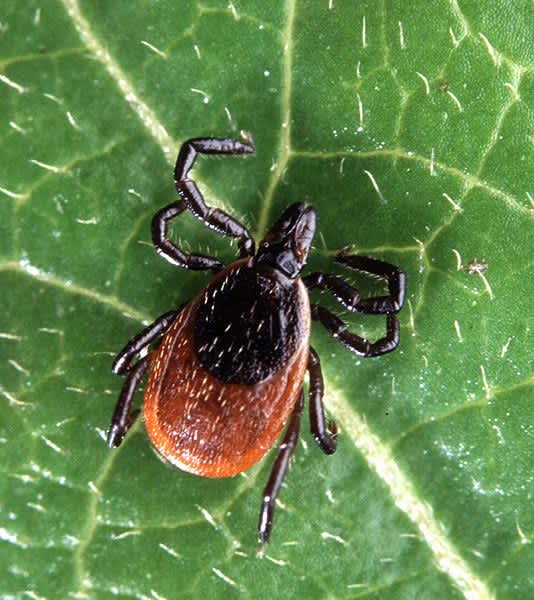Deadly New Deer Tick Virus Emerges in New York
OutdoorHub Reporters 07.25.13

In many parts of the country blacklegged ticks, or deer ticks, have a fearsome reputation for spreading Lyme disease. Commonly transmitted to humans, tick-borne diseases are reported by the Centers for Disease Control and Prevention (CDC) to be on the rise. Now scientists believe they have discovered a new threat from the blacklegged ticks called the Lineage II Powassan virus.
In a recently published paper in the journal Parasites and Vectors, researchers suggest that the Powassan virus is responsible for a number of human infections throughout the Hudson Valley in New York state. According to the Cary Institute for Ecosystem Studies, the virus can cause nervous system disruption, encephalitis, and meningitis in humans. There is a 10 to 15 percent fatality rate in documented cases and some survivors are left with permanent neurological damage.
“We’ve seen a rise in this rare but serious illness in parts of New York State that are hot spots for Lyme disease,” said Rick Ostfeld, one of the paper’s authors. “We suspected it was tied to an increase in blacklegged ticks carrying deer tick virus, particularly on the east side of the Hudson River.”
Ostfeld and his team surveyed more than 13,000 individual ticks from a variety of hosts over a period of five years. Along with deer, the blacklegged tick can also be found on small critters such as raccoons, foxes, birds, and even domestic animals. According to the CDC, ticks will often prefer different hosts at each stage of their life and risk of human infection is highest during the creature’s nymph stage. Ticks primarily find hosts by waiting in well-traveled areas with their first pair of legs outstretched. When a suitable host passes by the tick climbs aboard and attaches itself to the unwary victim.
The tick will begin feeding in as quickly as 10 minutes’ time. If the tick carries the illness, Lyme disease can be transmitted within a few hours or up to two days. Oftentimes, this gives victims a “grace period” to remove the tick and possibly avoid being infected. The American Lyme Disease Foundation advises that if a tick has become attached but not yet engorged with blood, it is likely that it has not yet transmitted Lyme disease. Unfortunately, the Powassan virus is not as patient. Unlike many of the common illnesses transmitted by ticks, the virus transmission can take as little as 15 minutes.
“There is no vaccine or specific antiviral therapy,” said Ostfield. “The best strategy remains prevention.”
While the Powassan virus is rare compared to Lyme disease, Ostfeld remains worried that the virus will spread beyond the state.
“The infection prevalence of about 1 percent to 6 percent among these ticks is low compared with Lyme disease, which often is found in 30 percent to 50 percent of ticks, but it’s still alarmingly high, giving you a one in 20 chance that the tick biting you might be transmitting a deadly virus,” Ostfeld told MedPage Today.
So far the Hudson River seems to provide a natural barrier preventing the virus from traveling west, but Ostfeld says historically deer ticks proved able to spread despite such obstacles.
“Therefore, we might expect Powassan to move across the Hudson into western New York and potentially elsewhere in the Mid-Atlantic and New England regions like the other tick-borne diseases,” Ostfeld said.
Research on the virus is ongoing. A different version of the Powassan virus was first identified in 1958 but relatively little is known about the virus until now.
Update: Other states in the region have also recorded cases of Powassan virus-related disease in recent years. According to the Minnesota Department of Health (MDH), common symptoms involve fever, headache, vomiting, weakness, confusion, loss of coordination, speech difficulties, and memory loss.
More information on identifying symptoms and possible risk of infection can be found on the MDH’s site here.
Visit the CDC’s website here for some useful tips on avoiding ticks.

